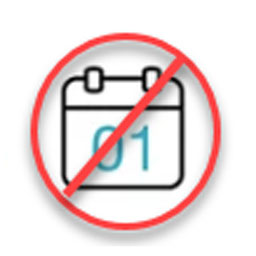Tap Into Your Home’s Equity Without Monthly Mortgage Payments*
What Is A Reverse Mortgage?
A reverse mortgage is a loose term referring to home loan programs for those over 62 in which no re-payment of principal and interest is required while the borrowers live in the home.
In essence a Reverse Mortgage gives borrowers an advance on the equity of their home, allowing them to convert a portion of their home’s equity into useable funds today.
Reverse Mortgages Are Helpful To

Eliminate Existing Mortgage Payments
Often removing the burden of mortgage payments frees up cash needed for other important expenses.*

Access Needed Money
Access to tax-free* proceeds can pay for health care costs, needed home renovations, or unexpected expenses.

Stay In Your Home
Have access to the funds you need, without repayment while staying in your home.*
Expand for Advanced Reading: What is a Reverse Mortgage?
The Consumer Financial Protection Bureau (CFPB) is a Federal Agency responsible for consumer protection in the financial sector, and they state:
“A reverse mortgage loan, like a traditional mortgage, allows homeowners to borrow money using their home as security for the loan. Also like a traditional mortgage, when you take out a reverse mortgage loan, the title to your home remains in your name. However, unlike a traditional mortgage, with a reverse mortgage loan, borrowers don’t make monthly mortgage payments. The loan is repaid when the borrower no longer lives in the home.”
Would you like to have a certified and licensed loan officer explain more about reverse Mortgages?
How Does a Reverse Mortgages Work?
Simply, think of a Reverse Mortgage is an advance on the eventual sale of your home.
The lender advances you money to use today and when you pass on or sale your home, you, or your heirs, repay the loan.
While you live in the home and abide by the terms of the loan (i.e. keeping your property taxes current, always having homeowners insurance, don’t transfer the title, etc.) there are no required repayments of principal and interest.
The interest and fees that are not paid will be added to the loan balance. Thus, over time the amount you owe the lender will increase.
Expand for Advanced Reading: How Does a Reverse Mortgage Work?
Once your reverse mortgage is in place, every month the bank will run calculations as to the interest accrued, line of credit growth, etc., and they will send out a statement letting you know that the interest on the money they have provided to you along with any fees.
- You can pay that MORE than that amount and your loan balance will decrease over time (like a regular mortgage)
- You can pay EXACTLY that amount and your loan balance will remain flat.
- You can Pay LESS than that amount (or nothing), and the loan balance will increase over time.
The calculation is rather simple [Previous Months Loan Balance + Monthly Interest & Fees – Any Payment] becomes your next month’s loan balance.
Example: If your loan balance was $10,000 and the monthly interest and fees were $182.00.
If you paid $300.00, your new loan balance would be $9,882.
If you paid $182.00, your new loan balance would be $10,000 (same as it was).
If you paid $100.00, your new loan balance would be $10,100.
If you made no payment, your new loan balance would be $10,182.
What are the requirements for a reverse?
To help homeowners age in place, traditional HECM reverse mortgages were established in in the late eighties by the Federal Housing Agency.
Because HECM’s are a government insured loan, there are several simple, yet important guidelines borrowers must meet to qualify.
The primary guidelines are:
One of the borrowers must be 62 or older.
You own your home (it is okay if you still have a small mortgage).
You occupy the home as your primary residence.
While there are additional guidelines (advanced reading), they usually only apply in rather unique cases.
If you meet the three primary guidelines above, you will likely qualify.
Expand for Advanced Reading: How Does a Reverse Mortgage Work?
The CFPB (Consumer Financial Protection Bureau) is the principle federal regulator responsible to administering consumer financial law in the United States.
One of the best articles on reverse mortgage requirements is on there site, and it states:
Home Equity Conversion Mortgages (HECMs), the most common type of reverse mortgage loan, are a special type of home loan available to homeowners who are 62 and older.
Aside from age, other reverse mortgage requirements include:
Your home must be your principal residence, meaning you live there the majority of the year.
You must either own your home outright or have a low mortgage balance. Owning your home outright means you do not have a mortgage on it anymore. If you have a mortgage balance, you must be able to pay it off when you close on the reverse mortgage. You can use your own funds or money from the reverse mortgage to pay off your existing mortgage balance.
You cannot owe any federal debt, such as federal income taxes or federal student loans. You may, however, use money from the reverse mortgage loan to pay off this debt.
You must have enough of your own money or agree to set aside part of the reverse mortgage funds at your loan closing to pay ongoing property charges, including taxes and insurance, as well as maintenance and repair costs.
Your home must be in good shape. If your house does not meet the required property standards, the lender will tell you what repairs need to be made before you can get a reverse mortgage loan.
You must receive counseling from a HUD-approved reverse mortgage counseling agency to discuss your eligibility, the financial implications of the loan, and other alternatives.
